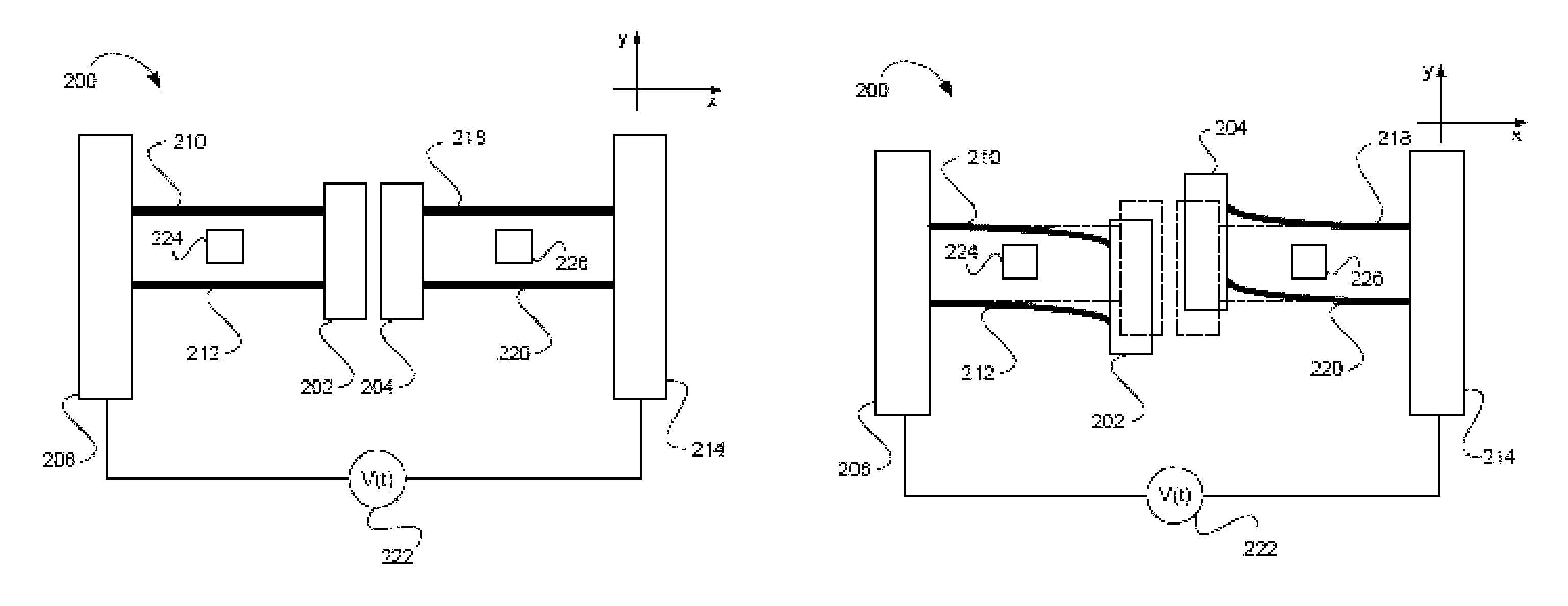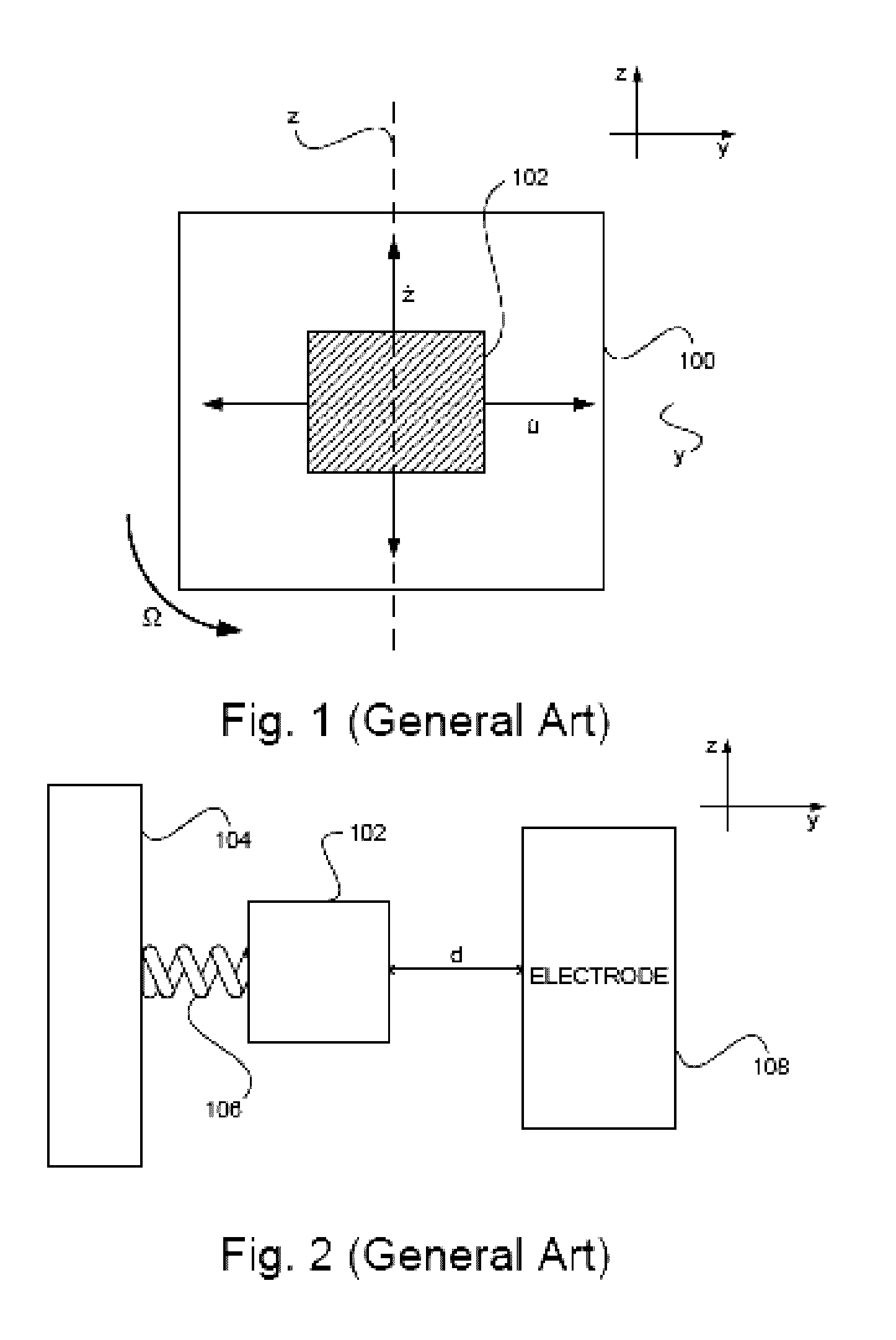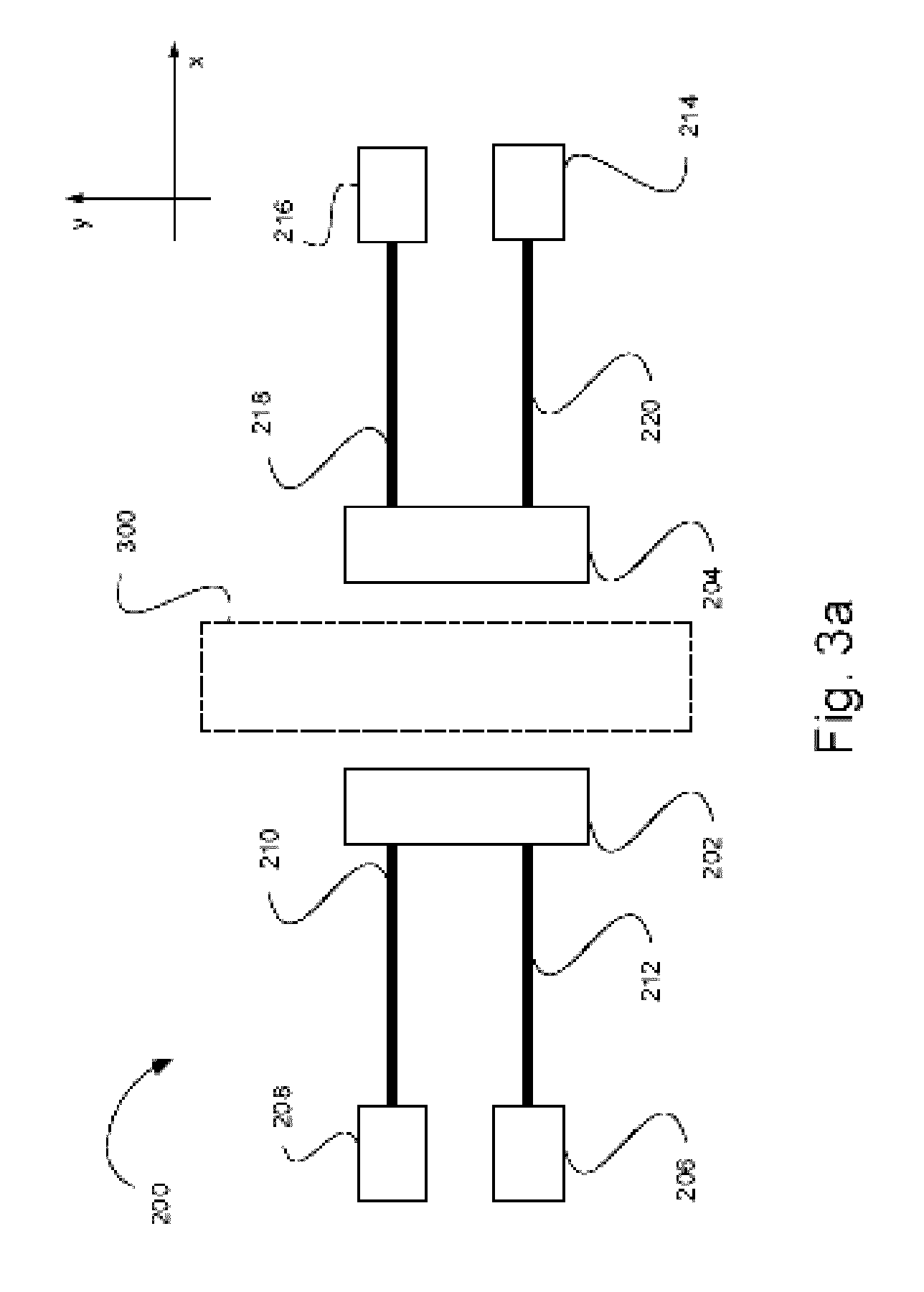Angular rate sensor
a technology of angular rate sensor and angular rate, which is applied in the direction of speed measurement using gyroscopic effects, instruments, surveying and navigation, etc., can solve the problems of low reliability, difficult unidirectional implementation, and non-vibratory (e.g., spinning) motion in microstructures
- Summary
- Abstract
- Description
- Claims
- Application Information
AI Technical Summary
Benefits of technology
Problems solved by technology
Method used
Image
Examples
Embodiment Construction
[0052]Referring now to the drawings, FIGS. 3a and 3b show schematically the gyroscope device 200 in accordance with two embodiments of the present invention. Generally, the gyroscope device 200 of the invention includes at least one pair of proof masses 202 and 204 which are coupled to anchors via an arrangement of suspended flexible beams and are associated with electrodes to be actuated / excited by application of electrostatic or magnetic force. The periodically induced deformation (tension) of the flexible beams causes parametric excitation, due to the periodic variation of the effective stiffness of the beams. The configuration is such that the beam is at its one end attached to the fixed anchor, and at the other “free” end is coupled to the proof mass. The electrostatic force may be applied by using direct voltage difference supply between two electrically conductive proof masses or via the use of electrodes. The latter may include a so-called “internal” or “central” electrode l...
PUM
 Login to View More
Login to View More Abstract
Description
Claims
Application Information
 Login to View More
Login to View More - R&D
- Intellectual Property
- Life Sciences
- Materials
- Tech Scout
- Unparalleled Data Quality
- Higher Quality Content
- 60% Fewer Hallucinations
Browse by: Latest US Patents, China's latest patents, Technical Efficacy Thesaurus, Application Domain, Technology Topic, Popular Technical Reports.
© 2025 PatSnap. All rights reserved.Legal|Privacy policy|Modern Slavery Act Transparency Statement|Sitemap|About US| Contact US: help@patsnap.com



